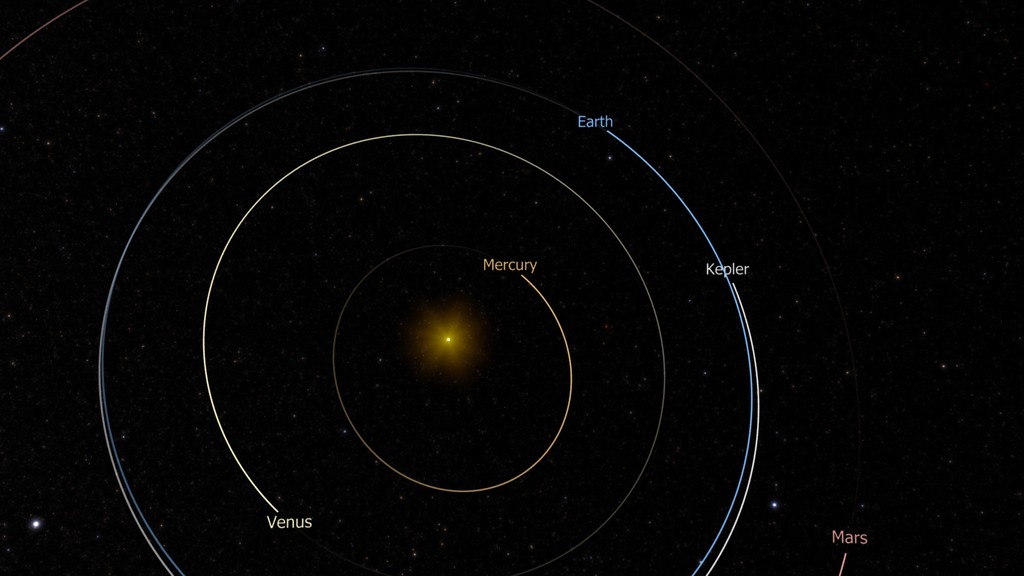Neptune’s Weather

Kepler’s observations of Neptune help pave the way for weather studies beyond the solar system.
A little light can illuminate a lot from afar. For Neptune, our eighth planet in the solar system it may mean getting a weather forecast. In 2014, NASA’s Kepler telescope observed small changes in reflected light off of Neptune’s atmosphere. These slight changes gave scientists clues about Neptune’s cloud cover which produces weather. The variations in light from Neptune are similar to those seen on other planets Kepler keeps its eye on: exoplanets. The similarity suggests that Kepler may be able to see evidence of weather on planets far outside our solar system. Watch the videos to learn more.
Neptune passed through Kepler's field of view in late 2014, allowing scientists to measure reflected sunlight.

Neptune and its line of orbit are shown in the telescope’s view, which is broken into multiple images shown by the squares.

NASA’s Kepler spacecraft is positioned to look out along the ecliptic, or plane of the solar system, to search for exoplanets beyond the sun.

Since its launch in 2009, Kepler has found more than 1,000 confirmed exoplanets by observing dips in the light emitted by stars.
For More Information
See NASA.gov
Credits
Please give credit for this item to:
NASA's Scientific Visualization Studio
Image Processing: Paul Schenk (Lunar and Planetary Institute) and Björn Jónsson (The Planetary Society)
Graphics by Scott Wiessinger (USRA) and Astrophotography by Tųnc Tezel (The World At Night)
-
Animator
- Ernie Wright (USRA)
-
Scientist
- Amy A. Simon (NASA/GSFC)
-
Producer
- Dan Gallagher (USRA)
-
Writer
- Kathryn DuFresne (Intern)
Release date
This page was originally published on Monday, December 25, 2017.
This page was last updated on Wednesday, May 3, 2023 at 1:47 PM EDT.

